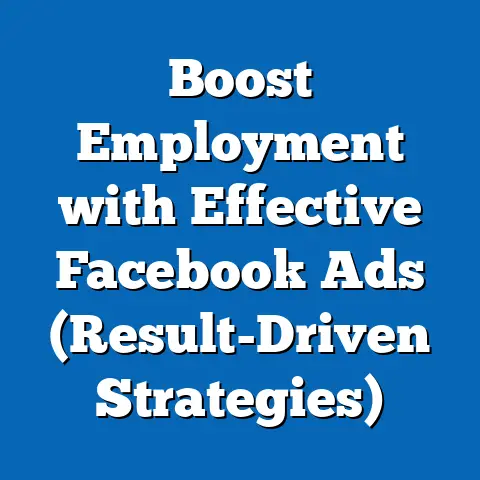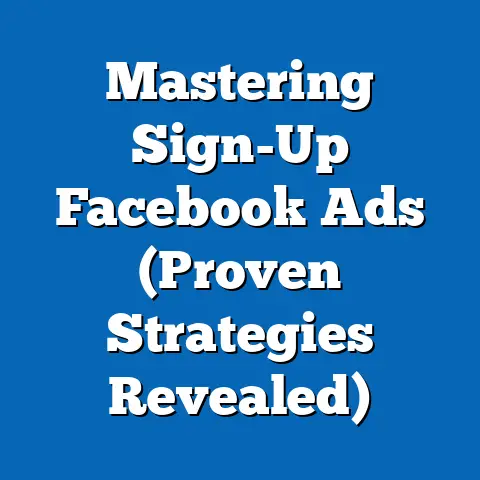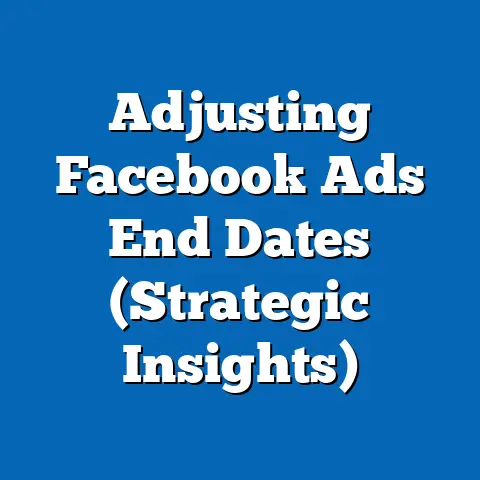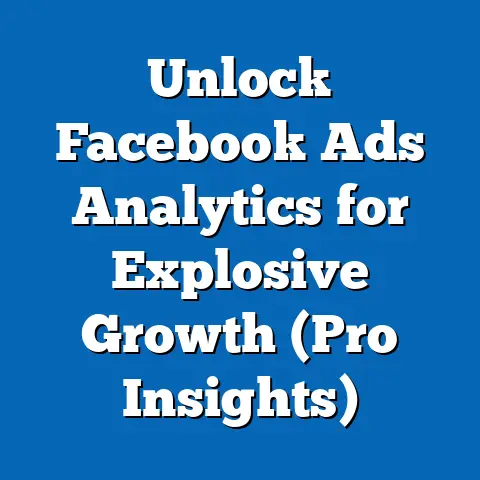Turning Facebook Ads into Gold (Proven Strategies Unveiled)
In today’s hyper-competitive digital landscape, where countless businesses vie for attention, mastering Facebook advertising isn’t just an option – it’s a lifeline. As an entrepreneur, small business owner, or marketer, you’re likely bombarded with information, promises, and the constant pressure to stay ahead. I’ve been there, feeling the frustration of campaigns that underperform and the uncertainty of where to invest my precious marketing budget. That’s why I’m sharing the strategies I’ve learned, tested, and refined over years of experience to help you transform your Facebook ads into a golden goose for your business.
The truth is, a well-crafted Facebook ad campaign can be the difference between obscurity and exponential growth. It’s about connecting with your audience, driving sales, and building a loyal customer base. I’ve seen firsthand how targeted ads can propel a small startup to new heights, turning a modest investment into a substantial return. So, let’s dive into the proven strategies that can help you unlock the full potential of Facebook advertising.
Section 1: Understanding the Power of Facebook Ads
Before we delve into the specifics of crafting and optimizing ads, it’s crucial to understand the sheer power and potential that Facebook advertising offers.
The Reach of Facebook
Facebook isn’t just a social media platform; it’s a global village. With billions of active users, it presents an unparalleled opportunity for businesses to reach a vast and diverse audience. Consider these statistics:
- Global Reach: As of 2024, Facebook boasts over 3 billion monthly active users worldwide. This means you have access to a massive pool of potential customers, regardless of your niche.
- Demographic Diversity: Facebook’s user base spans all age groups, income levels, and geographic locations. This allows you to target specific demographics that align with your ideal customer profile.
- Mobile Dominance: A significant portion of Facebook users access the platform via mobile devices. This is crucial for designing mobile-friendly ads that capture attention on the go.
These numbers aren’t just abstract figures; they represent real people with real needs and desires. I remember when I first started using Facebook ads, I was amazed at how quickly I could reach a global audience. One of my clients, a small artisanal coffee shop, managed to attract customers from all over the world through targeted Facebook ads, leading to a significant boost in online sales.
Targeting Capabilities
What truly sets Facebook ads apart is its advanced targeting capabilities. Unlike traditional advertising methods, Facebook allows you to reach specific audiences based on a wide range of factors, including:
- Demographics: Target users based on age, gender, education level, income, and location.
- Interests: Reach users who have expressed interest in specific topics, hobbies, or activities.
- Behaviors: Target users based on their online behavior, such as purchase history, website visits, and app usage.
- Custom Audiences: Upload your own customer data to create custom audiences and target users who have already interacted with your business.
- Lookalike Audiences: Expand your reach by targeting users who are similar to your existing customers.
For example, if you’re selling organic skincare products, you can target women aged 25-45 who are interested in natural beauty, wellness, and eco-friendly living. You can even target users who have visited your website or subscribed to your newsletter.
I’ve personally witnessed the effectiveness of these targeting strategies. One time, I was working with a local bookstore that was struggling to attract new customers. By creating a custom audience of existing customers and then using that audience to create a lookalike audience, we were able to significantly increase foot traffic to the store and boost book sales.
Takeaway: Facebook’s vast reach and advanced targeting capabilities make it a powerful platform for businesses of all sizes. By understanding these capabilities, you can create highly targeted ad campaigns that reach the right people at the right time.
Section 2: Crafting Compelling Ads
Once you understand the power of Facebook ads, the next step is to create ads that capture attention, communicate value, and drive action.
Creative Elements
The creative elements of your Facebook ad are what grab the user’s attention and entice them to learn more. These elements include:
- Visuals: High-quality images or videos are essential for capturing attention in a crowded news feed. Use visuals that are relevant to your product or service and that evoke emotion.
- Headlines: Your headline should be concise, attention-grabbing, and communicate the main benefit of your product or service.
- Ad Copy: Your ad copy should be clear, concise, and persuasive. Highlight the key features and benefits of your product or service and explain why the audience should care.
I always tell my clients to think of their ads as mini-billboards. You have a very limited amount of time to capture someone’s attention, so make every word and every pixel count. For instance, I once worked with a clothing brand that was struggling to stand out in a saturated market. By investing in professional-quality photos and crafting compelling ad copy that highlighted the brand’s unique selling proposition (eco-friendly materials and ethical manufacturing practices), we were able to significantly increase ad engagement and drive sales.
Value Proposition
Your value proposition is what sets you apart from the competition and convinces the audience that your product or service is worth their time and money. It should clearly communicate:
- What you offer: What product or service are you selling?
- Who you serve: Who is your target audience?
- Why they should care: What are the benefits of your product or service?
A strong value proposition is essential for cutting through the noise and capturing the attention of your target audience. I’ve found that the most effective value propositions are those that address a specific pain point or fulfill a specific need. For example, a company that sells time management software might highlight how their product can help busy professionals increase productivity, reduce stress, and achieve their goals.
Call to Action (CTA)
Your call to action is the final nudge that encourages users to take action. It should be clear, compelling, and tell users exactly what you want them to do. Some common CTAs include:
- Shop Now: Encourage users to make a purchase.
- Learn More: Direct users to a landing page with more information.
- Sign Up: Encourage users to subscribe to a newsletter or create an account.
- Download: Offer a free resource in exchange for contact information.
- Contact Us: Encourage users to reach out with questions or inquiries.
Your CTA should be prominently displayed and easy to click. I always recommend testing different CTAs to see which ones perform best. For example, you might test “Shop Now” against “Get 20% Off” to see which CTA generates more sales.
Takeaway: Crafting compelling ads requires a combination of creativity, strategy, and attention to detail. By focusing on the creative elements, value proposition, and call to action, you can create ads that capture attention, communicate value, and drive action.
Section 3: A/B Testing and Optimization
Creating effective Facebook ads isn’t a one-time effort. It requires continuous testing, analysis, and optimization.
The Importance of A/B Testing
A/B testing, also known as split testing, is the process of comparing two versions of an ad to see which one performs better. It’s a critical tool for optimizing your Facebook ad campaigns and maximizing your return on investment. You can test a variety of elements, including:
- Headlines: Test different headlines to see which ones capture more attention.
- Images: Test different images to see which ones resonate with your audience.
- Ad Copy: Test different ad copy to see which one is more persuasive.
- Audience Segments: Test different audience segments to see which ones are most responsive.
- Call to Action: Test different CTAs to see which ones drive more action.
I always tell my clients that A/B testing is like conducting a scientific experiment. You start with a hypothesis (e.g., “A shorter headline will generate more clicks”), and then you test that hypothesis by running two versions of the ad side-by-side.
Analyzing Results
Once you’ve run your A/B tests, it’s important to analyze the results and draw conclusions. Key metrics to monitor include:
- Click-Through Rate (CTR): The percentage of users who click on your ad after seeing it.
- Conversion Rate: The percentage of users who take the desired action after clicking on your ad (e.g., making a purchase, signing up for a newsletter).
- Return on Ad Spend (ROAS): The amount of revenue you generate for every dollar you spend on advertising.
- Cost Per Acquisition (CPA): The cost of acquiring a new customer through your Facebook ad campaign.
By analyzing these metrics, you can identify which ads are performing well and which ones need improvement. I always recommend creating a spreadsheet to track your A/B testing results and identify trends over time. For example, you might notice that ads with a certain type of image consistently generate a higher CTR.
Takeaway: A/B testing and optimization are essential for maximizing the performance of your Facebook ad campaigns. By continuously testing different elements and analyzing the results, you can identify what works best for your target audience and improve your return on investment.
Section 4: Budgeting and Bidding Strategies
Effectively managing your budget and bidding strategies is crucial for maximizing the impact of your Facebook ad campaigns.
Setting a Budget
Determining the right budget for your Facebook ad campaigns depends on a variety of factors, including your business goals, target audience, and industry. Some common budgeting strategies include:
- Daily Budget: Set a fixed amount to spend each day.
- Lifetime Budget: Set a total amount to spend over the entire duration of the campaign.
I often advise clients to start with a smaller daily budget and gradually increase it as they see positive results. This allows you to test different strategies and optimize your campaigns without risking a large sum of money. It’s also important to consider the length of your sales cycle when setting your budget. If you’re selling a high-priced product or service, you may need to invest more in your campaigns to nurture leads and drive conversions.
Bidding Strategies
Facebook offers a variety of bidding options to help you control how much you spend on your ads. Some common bidding strategies include:
- Cost Per Click (CPC): You pay each time someone clicks on your ad.
- Cost Per Impression (CPM): You pay for every 1,000 times your ad is shown.
- Cost Per Acquisition (CPA): You pay only when someone takes the desired action (e.g., making a purchase, signing up for a newsletter).
The best bidding strategy for your campaign depends on your objectives. If you’re focused on driving traffic to your website, CPC bidding might be the best option. If you’re focused on brand awareness, CPM bidding might be more effective. I’ve found that CPA bidding is a good option for campaigns that are focused on generating leads or sales. However, it requires a higher level of optimization and tracking to ensure that you’re not paying too much for each acquisition.
Takeaway: Setting the right budget and choosing the right bidding strategy are essential for maximizing the impact of your Facebook ad campaigns. By carefully considering your business goals, target audience, and industry, you can develop a budgeting and bidding strategy that aligns with your objectives and delivers a strong return on investment.
Section 5: Retargeting and Building Customer Loyalty
Retargeting and building customer loyalty are essential for maximizing the lifetime value of your customers and driving long-term growth.
The Power of Retargeting
Retargeting is the process of showing ads to users who have previously interacted with your brand. This can include users who have visited your website, viewed a product page, or added an item to their cart. Retargeting is a powerful tool for reconnecting with potential customers who have shown interest in your products or services but haven’t yet made a purchase.
I’ve seen firsthand how effective retargeting can be. One time, I was working with an e-commerce store that was experiencing a high rate of abandoned carts. By implementing a retargeting campaign that showed ads to users who had added items to their cart but didn’t complete the purchase, we were able to recover a significant portion of those abandoned carts and boost sales.
Building Customer Loyalty
Building customer loyalty is essential for long-term success. Loyal customers are more likely to make repeat purchases, recommend your brand to others, and provide valuable feedback. You can use Facebook ads to nurture existing customers and turn them into brand advocates. This can include:
- Personalized Messaging: Show ads that are tailored to the specific interests and needs of your existing customers.
- Exclusive Offers: Offer exclusive discounts, promotions, or early access to new products.
- Customer Appreciation: Show ads that express gratitude to your loyal customers.
I always recommend creating a separate Facebook ad campaign specifically for existing customers. This allows you to tailor your messaging and offers to their specific needs and interests. For example, you might show ads to customers who have purchased a certain product, recommending complementary products or accessories.
Takeaway: Retargeting and building customer loyalty are essential for maximizing the lifetime value of your customers and driving long-term growth. By reconnecting with potential customers and nurturing existing relationships, you can create a loyal customer base that will support your business for years to come.
Section 6: Real-World Case Studies
To illustrate the power of these strategies, let’s examine some real-world case studies of businesses that have successfully turned their Facebook ad campaigns into profitable ventures.
Success Stories
- Case Study 1: Local Restaurant
- Challenge: Struggling to attract new customers and compete with larger chains.
- Strategy: Implemented a targeted Facebook ad campaign that focused on local residents and highlighted the restaurant’s unique menu items and cozy atmosphere.
- Results: Increased foot traffic by 30% and boosted overall revenue by 20%.
- Case Study 2: Online Clothing Boutique
- Challenge: Low website traffic and high cart abandonment rates.
- Strategy: Implemented a retargeting campaign that showed ads to users who had visited the website or added items to their cart but didn’t complete the purchase.
- Results: Recovered 25% of abandoned carts and increased overall sales by 15%.
- Case Study 3: Software Company
- Challenge: Generating leads and converting them into paying customers.
- Strategy: Implemented a lead generation campaign that offered a free trial of their software in exchange for contact information.
- Results: Increased lead generation by 40% and boosted conversion rates by 20%.
- Challenge: Struggling to attract new customers and compete with larger chains.
- Strategy: Implemented a targeted Facebook ad campaign that focused on local residents and highlighted the restaurant’s unique menu items and cozy atmosphere.
- Results: Increased foot traffic by 30% and boosted overall revenue by 20%.
- Challenge: Low website traffic and high cart abandonment rates.
- Strategy: Implemented a retargeting campaign that showed ads to users who had visited the website or added items to their cart but didn’t complete the purchase.
- Results: Recovered 25% of abandoned carts and increased overall sales by 15%.
- Challenge: Generating leads and converting them into paying customers.
- Strategy: Implemented a lead generation campaign that offered a free trial of their software in exchange for contact information.
- Results: Increased lead generation by 40% and boosted conversion rates by 20%.
Lessons Learned
These case studies highlight several key takeaways:
- Targeted Advertising Works: Focusing on a specific audience and tailoring your messaging to their needs and interests is essential for success.
- Retargeting is Powerful: Reconnecting with potential customers who have already shown interest in your brand can significantly boost sales.
- Lead Generation is Key: Offering valuable resources in exchange for contact information can help you build a list of qualified leads and nurture them into paying customers.
Takeaway: These real-world case studies demonstrate the power of Facebook advertising when implemented strategically. By learning from these success stories, you can apply the same principles to your own campaigns and achieve similar results.
Conclusion: The Road Ahead
The landscape of Facebook advertising is ever-evolving, with new features, algorithms, and best practices emerging constantly. However, the fundamental principles of effective advertising remain the same: understanding your audience, crafting compelling ads, and continuously testing and optimizing your campaigns.
Businesses that implement proven strategies and stay adaptable will find success in turning their Facebook ads into gold. I encourage you to take action, experiment with the strategies discussed in this article, and continuously learn from your campaigns. By doing so, you can unlock the full potential of Facebook advertising and achieve your business goals.
Remember, the journey to mastering Facebook advertising is a marathon, not a sprint. It requires patience, persistence, and a willingness to learn and adapt. But with the right strategies and a commitment to continuous improvement, you can turn your Facebook ads into a valuable asset that drives growth and success for your business.




